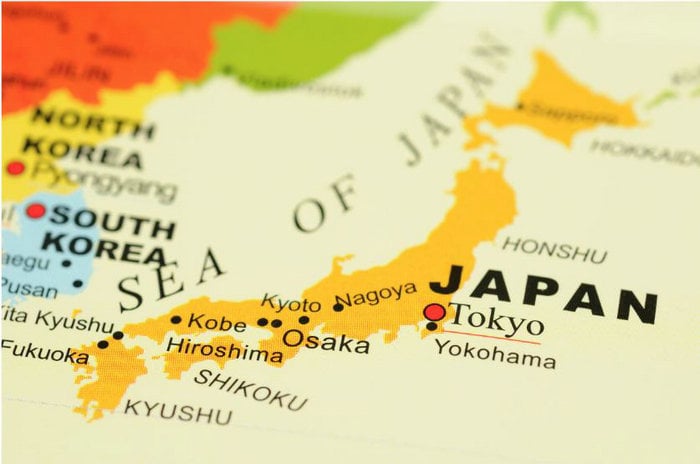
Shipping from China to Japan is a seamless and strategic operation due to the two countries’ geographic proximity and robust trade relations. As you explore the shipping options, you will find various means to move goods across the East China Sea, which separates China and Japan. Whether you choose air or sea freight, the well-established routes offer reliability and efficiency. Freight services are tailored to cater to diverse shipping needs, whether for large consignments or smaller parcels.
Understanding the customs regulations, documentation, and tariffs is critical for a smooth transaction. You should be aware that both countries have specific import and export guidelines to adhere to. Moreover, since Japan is known for its stringent customs policies, ensuring that all your paperwork is in order can save you time and potential complications. It’s essential to work with experienced shippers or freight forwarders who are familiar with the nuances of trans-Pacific trade.
Delivery times and shipping costs are often the top considerations when shipping internationally, especially in the business context. With options such as express shipping for time-sensitive goods or economy services for cost-saving measures, you can align the shipment with your logistical requirements and budget. Regular ferry services and frequent flights between the two nations facilitate swift transit. Hence, evaluating your priorities and choosing the right freight service will dictate the success of your shipping endeavor.
This article explains everything you need to know about shipping from China to Japan.
Modes of Transport
Choosing the right mode of transport for shipping from China to Japan is crucial for efficiency, cost-effectiveness, and timely delivery. Your cargo’s nature, budget, and speed requirements will influence your decision.
- Sea freight: Sea freight from China to Japan is the most viable option for cost-effectively transporting large quantities of goods. There are two common freight options used in international shipping to transport goods to Japan:
- FCL shipping (Full Container Load): FCL refers to shipping a container that one shipper exclusively uses. The shipper rents the entire container to transport their goods, which means they do not share the space with other shippers’ cargo. This option is typically chosen when the volume of goods is enough to fill a container or when a shipper wants more control over the handling of their cargo.
- LCL shipping (Less than Container Load): LCL is used when the shipper does not have enough goods to fill an entire container. In this case, the shipper’s cargo will be consolidated with other shippers’ goods to fill a container. This is a cost-effective shipping solution for smaller shipments, as shippers only pay for the space they use.
- Air freight: For urgent or high-value shipments, air freight from China to Japan is the fastest shipping method.
- Rail shipping: Rail freight is a cost-effective and reliable alternative, particularly for shipments from inland China to Japan. It strikes a balance between air and sea freight with regard to cost and transit time.
- Door-to-door shipping: Courier services are your best bet for sending small packages or documents quickly and with minimal hassle.
- Delivered Duty Paid shipping: The seller pays duties and handles customs clearance in the destination country. Convenient but can be more expensive.
Major Shipping Routes
Major Seaports
| Major Seaport in China | Major Seaport in Japan |
| Shanghai | Tokyo |
| Shenzhen | Yokohama |
| Ningbo-Zhoushan | Osaka |
| Guangzhou | Kobe |
| Qingdao | Nagoya |
| Tianjin | Moji |
Two primary maritime channels stand out in navigating shipping from China to Japan due to their efficiency and frequent use.
Port of Shanghai to Port of Tokyo:
| Distance | Approximately 1,750 kilometers (1,087 miles) |
| Transit Time | Roughly 48 – 96 hours |
| Frequency | Multiple sailings per week |
Your cargo journey from the Port of Shanghai to the Port of Tokyo encompasses one of the busiest shipping lanes in the world. As a vital hub, the Port of Shanghai is equipped with state-of-the-art facilities and a vast array of shipping lines. This route typically takes between 2 to 4 days, with multiple weekly departures.Port of Ningbo to Port of Osaka
| Distance | Around 1,300 kilometers (808 miles) |
| Transit Time | On average 48 – 72 hours |
| Frequency | Several departures each week |
Shipping from the Port of Ningbo to the Port of Osaka provides another crucial link for shipment between China and Japan. This route is especially important for industries requiring consistent and timely deliveries. Standard transit time is approximately 2 to 3 days, depending on vessel speed and specific shipping services used.
Major Airports
| Major Airport in China | Major Airport in Japan |
| Beijing Capital International Airport | Narita International Airport (Tokyo area) |
| Shanghai Hongqiao International Airport | Haneda Airport (Tokyo) |
| Shanghai Pudong International Airport | Kansai International Airport (Osaka) |
| Chengdu Shuangliu International Airport | Chubu Centrair International Airport (Nagoya) |
| Guangzhou Baiyun International Airport | |
| Shenzhen Baoan International Airport |
Key factors of the major airports handling cargo shipping to Japan from China:
- Tokyo Haneda Airport (HND): Close to the city center, Tokyo Haneda handles a significant portion of Japan’s international air cargo, making it a critical airport for trade with China.
- Narita International Airport (NRT): As the leading international gateway serving the greater Tokyo area, Narita is well-equipped for cargo handling and is critical for logistics operations between the two countries.
- Kansai International Airport (KIX): Positioned on an artificial island in Osaka Bay, Kansai supports robust cargo facilities, serving as an important node for air transport between China and Japan.
Transit Times
When importing from China to Japan, you have various options that impact shipping times. Your choices will determine how quickly your goods arrive.
Primary Trade Channels
Sea Freight: Ocean freight is the slowest in the shipping industry. The predominant trade channel features container ships and bulk carriers. Major sea ports include the Port of Shanghai and the Port of Yokohama.
| Port of Departure | Port of Arrival | Estimated Transit Time |
|---|---|---|
| Shanghai | Yokohama | 2-4 days |
| Shanghai | Tokyo | 2-5 days |
| Shanghai | Osaka | 3-4 days |
| Shanghai | Kobe | 3-4 days |
| Shanghai | Nagoya | 4-5 days |
| Shanghai | Moji | 2-3 days |
| Ningbo | Yokohama | 4-6 days |
| Ningbo | Tokyo | 4-6 days |
| Ningbo | Osaka | 2-3 days |
| Ningbo | Kobe | 3-5 days |
| Ningbo | Nagoya | 3-5 days |
| Ningbo | Moji | 2-3 days |
| Dalian | Yokohama | 3-5 days |
| Dalian | Tokyo | 3-5 days |
| Dalian | Osaka | 2-4 days |
| Dalian | Kobe | 3-4 days |
| Dalian | Nagoya | 4-5 days |
| Dalian | Moji | 2-3 days |
Air Freight: Air freight is a viable option for time-sensitive cargo with frequent flights connecting cities like Beijing and Tokyo.
| Airport of Departure | Airport of Arrival | Estimated Flight Time |
|---|---|---|
| Beijing Capital International Airport | Haneda Airport | 3-4 hours |
| Shanghai Pudong International Airport | Kansai International Airport | 2-3 hours |
| Shanghai Pudong International Airport | Haneda Airport | 2-3 hours |
These sailing times do not account for additional factors such as port handling, loading and unloading, and customs clearance. Both maritime and air freight routes from China to Japan are established and reliable, supporting a consistent flow of trade between the two nations.
Factors Affecting Transit Time
Your cargo’s journey from China to Japan involves several factors that influence delivery time.
- Custom and Border Clearance
- When shipping goods from China to Japan, customs and border clearance procedures can introduce delays. China’s export formalities and Japan’s import regulations necessitate thorough documentation and compliance checks. Items requiring additional scrutiny, such as regulated goods, may extend processing times.
- Weather and Seasonal Variations
- The transit time can be significantly affected by weather patterns and seasons. For example, typhoons are common in the region from May to October, which can delay shipments. Winter months may present additional challenges, such as:
- Rough seas cause slower sailing times or rerouting.
- Limited visibility or freezing conditions impact port operations.
- The transit time can be significantly affected by weather patterns and seasons. For example, typhoons are common in the region from May to October, which can delay shipments. Winter months may present additional challenges, such as:
- Operational Efficiency
- Port and carrier operational efficiency are pivotal in transit time. This includes:
- The promptness of loading and offloading cargo.
- Turnaround time of shipping vessels.
- Port and carrier operational efficiency are pivotal in transit time. This includes:
Shipping companies with better operational records are likely to minimize delays, ensuring faster delivery of your goods.
Cost Considerations

When conducting the trade, you need to be aware of the shipping costs from China to Japan, including shipping rates, fuel costs, and relevant tariffs and taxes.
Shipping Rates
Shipping fees vary depending on the carrier, type of cargo, and service speed.
- Sea freight is the cheapest shipping method from China to Japan. It is most common and cost-effective for large shipments.
- Air freight service is more expensive than sea shipping service, but it is suitable for shipping light and time-sensitive products from China to Japan.
- Express shipping from China to Japan may double or triple in value compared to standard shipping rates.
| Mode of Transport | Cost of Shipping |
| Sea Freight | $30 to $80 per cubic meter |
| Sea Freight | $1,000 USD for a 20-foot container |
| Sea Freight | $1,800 USD for a 40-foot container |
| Air Freight | $6 to $8 per kilogram |
| Express Shipping | $4.5 per kilogram |
Fuel Costs
Fuel surcharges constitute a significant portion of total shipping costs. As fuel prices fluctuate, so will your costs. Presently, bunker fuel prices are approximately $350 per metric ton. The impact on your shipment’s cost depends on the distance and the vessel’s fuel efficiency.
Customs Duties and Taxes
Importing goods from China to Japan requires you to navigate the complexities of customs duties and taxes. Understanding how these are calculated and what exemptions may apply is crucial for efficient and cost-effective shipping.
To determine the customs duties and taxes payable when importing from China to Japan, you must first classify your goods according to the Harmonized System (HS) Code. Each product has a specific HS code, which dictates the applicable duty rate.
Key factors in calculating duties and taxes:
- Value of Goods (CIF): This is the cost of the goods plus insurance and freight to Japan.
- Duty Rate: This is determined by the HS code and can vary significantly depending on the product type.
- Consumption Tax: In Japan, a consumption tax is also applied, much like a value-added tax (VAT).
Import duties can range from 0% to 10%, depending on the product classification under the Harmonized System code. Additionally, Japan’s consumption tax is typically set at 10%. It’s crucial to check the specifics of your particular goods to budget accurately. Below is a brief table of common categories:
| Products | Import Duty |
| Electronics | 0-3.9% Import Duty |
| Apparel | Up to 10% Import Duty |
| Consumables | 3.8-6.4% Import Duty |
Step-by-Step Clearance Process
When exporting items from China to Japan, you must comply with a series of specific procedures to ensure a smooth customs clearance process. This section guides you through the necessary steps, from pre-shipment requirements to the inspection and clearance protocols upon arrival in Japan.
Pre-Shipment Requirements
Before your goods leave China, you need to prepare the appropriate documentation. Your paperwork must include:
- Commercial Invoice: Detailed information about the transaction between the seller and buyer, describing the goods, prices, and terms of sale.
- Packing List: A detailed list describing the quantity, type, and weight of the goods you are shipping.
- Export License: Obtained for controlled products; not all goods require an export license in China.
- Certificate of Origin: Official document stating the origin of the goods. This document is important for tariff calculations.
- Bill of Lading or Air Waybill: A contract between the owner of the goods and the carrier. A Bill of Lading is used for sea shipments, while an Air Waybill is used for air cargo.
Additionally, ensure your products comply with Japan’s import regulations. Incorrect or missing documentation can result in delays or rejections of your shipment at the Japanese border.
Inspection and Customs Clearance in Japan
Upon arrival in Japan, your shipment undergoes a rigorous inspection process. Japanese Customs will:
- Review your documents for accuracy and completeness:
- Customs Declaration: A declaration made by the importer or their licensed customs agent detailing the nature, quantity, and value of the goods entering Japan.
- Import License: Certain goods require an import license in Japan, which you must acquire prior to shipment.
- Invoice and Packing List: These should match the documents provided for the export from China.
- Bill of Lading or Air Waybill: As per the shipping method, this document must correspond to the one issued in China.
- Certificate of Origin: If required, this certificate must accompany the goods to qualify for any preferential treatment under trade agreements.
- Physically inspect the goods to verify their compliance with Japanese standards and regulations.
After a successful inspection, you will be required to pay the appropriate duties and taxes. Your goods are then cleared, and you receive a release notification. Use a reliable freight forwarder to facilitate the procedure and handle any unforeseen issues, as they are familiar with the nuances of Japan’s import laws.
Packaging and Labeling Requirements

When shipping your goods from China to Japan, it is vital to adhere to specific packaging and labeling requirements to ensure that your shipment complies with regulations and is processed smoothly through customs.
Packaging Standards:
- Your items must be packed securely to prevent damage during transit.
- Use durable materials such as corrugated cardboard boxes for outer packaging.
- Delicate items should be wrapped in bubble wrap or similar protective material.
Labeling Guidelines:
- Labels must be clear and readable.
- They should include the following information:
- Shipper’s and receiver’s full names and addresses
- Telephone numbers of both shipper and receiver
- Detailed list of contents in English and Japanese
Barcodes:
- Attach a barcode to the package for tracking and processing.
- Ensure the barcode is not covered or obscured by any other labels or tape.
Customs Compliance:
- All shipments must have a customs declaration label affixed.
- Indicate the accurate value and description of the goods.
Japanese-Specific Requirements:
- Include a Harmonized System (HS) code to describe exported goods.
- Products with specific compliance needs (e.g., electronics, cosmetics) should have labels with compliance marks recognized by Japanese authorities.
By strictly following these requirements, you help guarantee that your shipment reaches its destination without unnecessary delays or complications.
Insurance and Liability
When shipping from China to Japan, it’s crucial that you understand the insurance terms and liability coverage to protect your cargo. Adequate insurance safeguards your interests in case of loss or damage.
Types of Coverage
- All-Risk Insurance: This insurance covers losses from a wide range of perils, except those explicitly excluded in the policy. It’s the most comprehensive type of coverage you can opt for.
- Named Perils Insurance: Only risks listed in the policy are covered. Common named perils include fire, theft, and water damage.
- General Average: In maritime shipping, if your shipment is sacrificed for the safety of the vessel, General Average coverage ensures contribution from all parties.
Claims Process
- Accurate Documentation: Always maintain meticulous records of your shipment. In the event of a claim, you will need to provide:
- Bill of Lading
- Commercial Invoice
- Packing List
- Proof of Insurance
- Photos of Damages, if applicable
- Claim Submission: File the claim with your insurer as soon as possible. Adhere to submission deadlines and include all necessary documentation to support your claim.
- Evaluation: The insurance company will assess your claim to determine liability and the extent of coverage. This process involves examining the cause and the value of the loss or damage.
Tracking and Technology
Efficient tracking systems and advanced technology are crucial for managing shipping logistics from China to Japan. These systems ensure transparency and efficiency in the shipping process.
Real-time Tracking Systems
Real-time tracking systems enable you to monitor your shipments as they move from China to Japan. Key components include:
- GPS Technology: Provides precise location data for vessels.
- RFID Tags: Offer container-level tracking to determine the exact position of your goods.
This level of tracking allows for immediate updates on shipment status and estimated arrival times.
Automation in Shipping
Automation streamlines operations and minimizes human errors in the shipping process. Key automation technologies used include:
- Automated Guided Vehicles (AGVs): These are used in ports for moving containers efficiently.
- Automated Sorting Systems: Help in sorting packages quickly, thus reducing processing time.
Investing in automation results in faster turnaround times and lowers the risk of delays in the shipping journey from China to Japan.
Why Choose Us? Luckystar Logistic
Established in 2022, Luckystar is an esteemed member of the Federal Maritime Commission (FMC) and operates as a Non-Vessel Operating Common Carrier (NVOCC). The company’s mission is to deliver superior service quality at reduced costs, primarily serving China, the USA, Canada, and Europe. With core team members boasting over 20 years of experience in logistics, this freight forwarder in China brings considerable expertise to the table. Since its inception, the shipping freight company has been dedicated to offering global door-to-door transport and logistics solutions, emphasizing dependability, adaptability, and responsiveness.
We’re not just a company; we are transportation experts! Offering industry-leading solutions, we take pride in providing premium shipping services at a fraction of the cost of other freight forwarders, both in China and across the globe. Here’s why partnering with us is the smart move:
Accuracy You Can Count On:
Say goodbye to delivery delays and hello to timely delivery, which is vital for businesses needing to deliver goods swiftly to their customers.
Your Passport to Global Reach:
Our wide network of delivery destinations virtually covers the entire globe, offering extraordinary opportunities for businesses aiming to expand their reach. You can be assured that your package will find its way to almost any corner of the world, taking your business global!
Track with Ease:
Say goodbye to guesswork. Our stringent procedures afford you a live tracking mechanism, making it easy for you to follow your shipment’s progress at every stage of its journey. Stay informed and enjoy peace of mind, knowing exactly where your shipment is anytime you need to know.
Personalized Service, Every Step of the Way:
One of our dedicated team members will personally oversee your shipment from start to finish. This, coupled with our commitment to transparency and constant communication, ensures you are kept updated on the progress of your cargo every step of the way.
When shipping hazardous materials, it’s crucial to work with experienced service providers to ensure that your shipment is handled safely and efficiently. By partnering with us, you can have peace of mind knowing that your shipment is in good hands.
Are you looking for an experienced freight forwarder to assist you in shipping? Contact us. We’re always ready to help. Offering the unbeatable cheapest shipping rates for international shipping, our services are more affordable than you’d believe. Don’t hesitate! Get in touch with us today.
